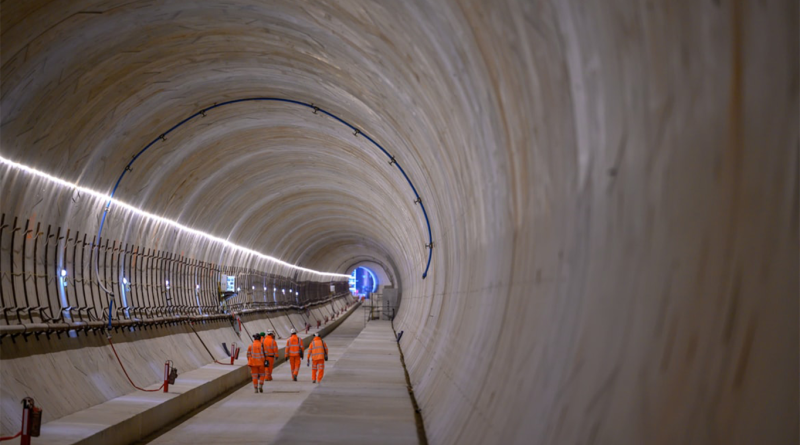HS2 Tunnel Construction Advances with Long Itchington Wood Milestone
Subscribe to our free newsletter to keep up-to-date with our latest construction and civil engineering news.
The High-Speed 2 project is one of the most ambitious infrastructure developments in British history, aiming to revolutionise the country’s rail network by providing faster, more efficient connections between London, Birmingham, Manchester, and beyond. As part of this extensive construction effort, tunnels play a crucial role in ensuring the railway seamlessly integrates with the surrounding landscape while minimising environmental disruption.
One of the key milestones in HS2’s development is the completion of major civil engineering work on the Long Itchington Wood Tunnel in Warwickshire. This tunnel, stretching one mile beneath ancient woodland, represents a critical section of the route between London and the West Midlands. Built to protect the natural ecosystem above, the tunnel was excavated using a tunnel boring machine named Dorothy—the first TBM deployed on the HS2 project.
Following months of meticulous excavation, both tunnel bores have been completed, marking a significant step towards the next phase of HS2 construction. With the civil engineering stage now finalised, the focus will shift to railway system installation, including tracks, signalling, and electrification. This achievement underscores HS2’s commitment to delivering sustainable, high-speed rail infrastructure that enhances connectivity while preserving the environment.
Construction of the Long Itchington Wood Tunnel began in June 2020, with preparations focusing on creating the necessary launch site for tunnel excavation. Balfour Beatty VINCI, the main contractor for this section of HS2, oversaw the deployment of the 2,000-tonne tunnel machine Dorothy, which was specifically designed to handle the geological conditions beneath Warwickshire.
Dorothy embarked on its first bore in December 2021, carving out the southern section of the tunnel in just under five months. The machine then underwent a complex dismantling and relocation process before being reassembled to complete the second bore, which was successfully finished in March 2023.
The excavation process involved digging through a mixture of mudstone and siltstone, requiring precision engineering to maintain stability. Engineers lined the tunnel with 790 concrete segments per bore, ensuring long-term durability. Managing water table levels was also critical in preventing disruptions during excavation.
Once excavation was complete, additional work was required to connect both tunnel bores and stabilise the structure. The final milestone, completing civil works in early 2025, paves the way for railway installation and system integration.
The Long Itchington Wood Tunnel was designed with environmental protection as a priority, ensuring minimal disruption to the ancient woodland and local wildlife above. Unlike traditional railway cuttings, which require the removal of large sections of land, the tunnel was constructed to preserve the natural habitat while still allowing for the development of HS2’s high-speed rail network.
The tunnel’s construction followed a low-impact approach, incorporating a fully enclosed excavation process to prevent surface disruption and reduce noise pollution. Land restoration initiatives, including replanting native trees and vegetation, have been implemented to enhance biodiversity. Sustainable material sourcing has also been a key focus, with locally produced concrete used for tunnel linings to reduce carbon emissions.
Beyond environmental considerations, community engagement has played a key role in HS2’s approach to the tunnel’s development. Regular consultations and public updates have been provided to address concerns regarding noise, air quality, and construction traffic.
As part of its commitment to long-term local benefits, HS2 has invested in new public green spaces to offset land use changes. The project has also created apprenticeship and employment opportunities, with local workers contributing to the construction effort. Future improvements to transport links in Warwickshire will further increase connectivity for residents.
With these measures in place, the Long Itchington Wood Tunnel serves as a model for how major infrastructure projects can balance engineering progress with environmental responsibility.
With the major excavation and civil engineering phase now completed, attention shifts to the next critical stage of the HS2 project: installing essential railway infrastructure within the tunnel.
Engineers will begin laying the ballastless track system, designed to support high-speed rail operations. The tunnel will be equipped with state-of-the-art power and control technologies, ensuring smooth and efficient train operations. Fire suppression systems, emergency exits, and ventilation units will also be integrated into the tunnel design. By 2026, the tunnel is expected to be fully operational, forming a key segment of HS2’s Phase One route from London to Birmingham.
Source:
